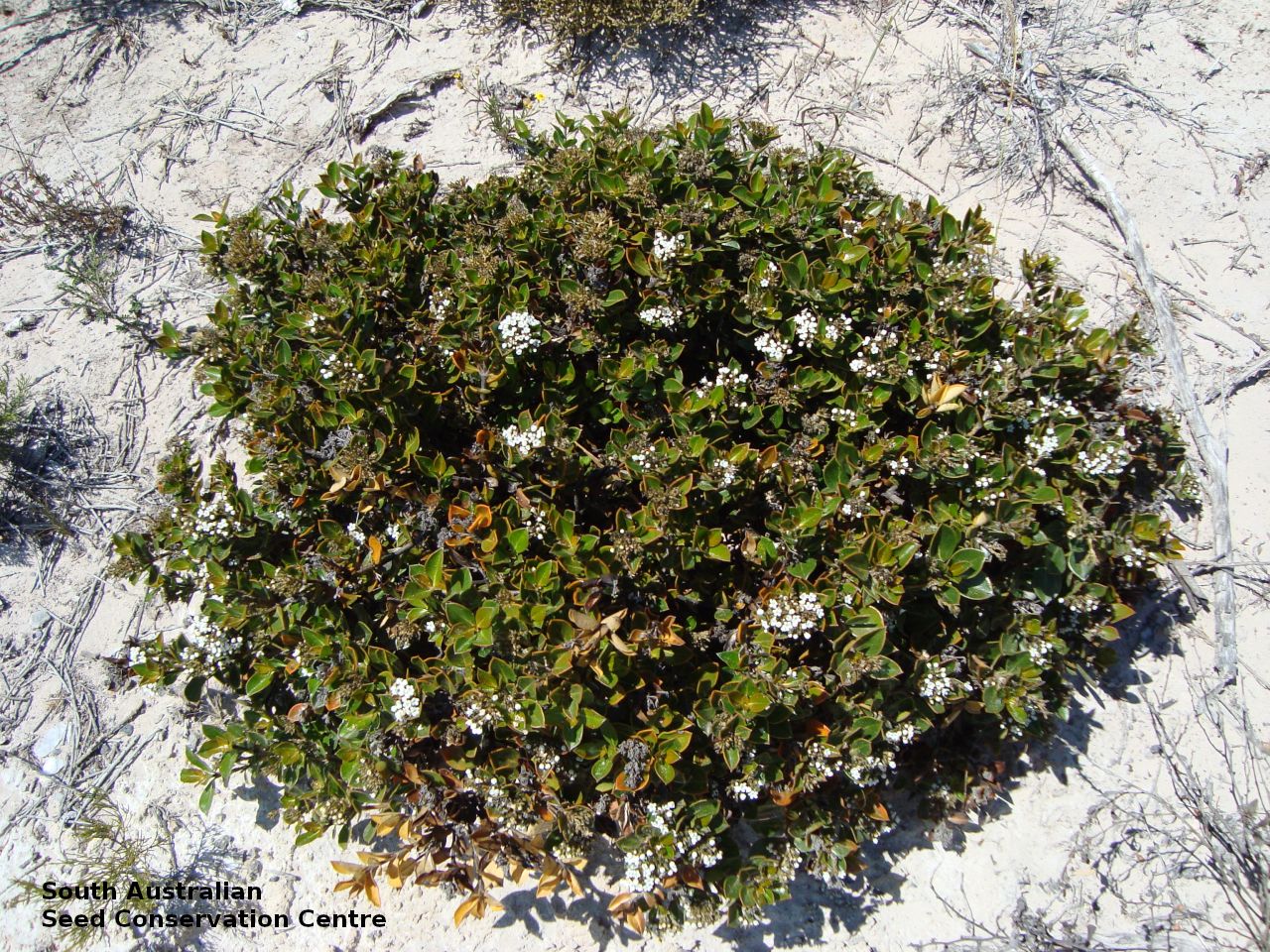
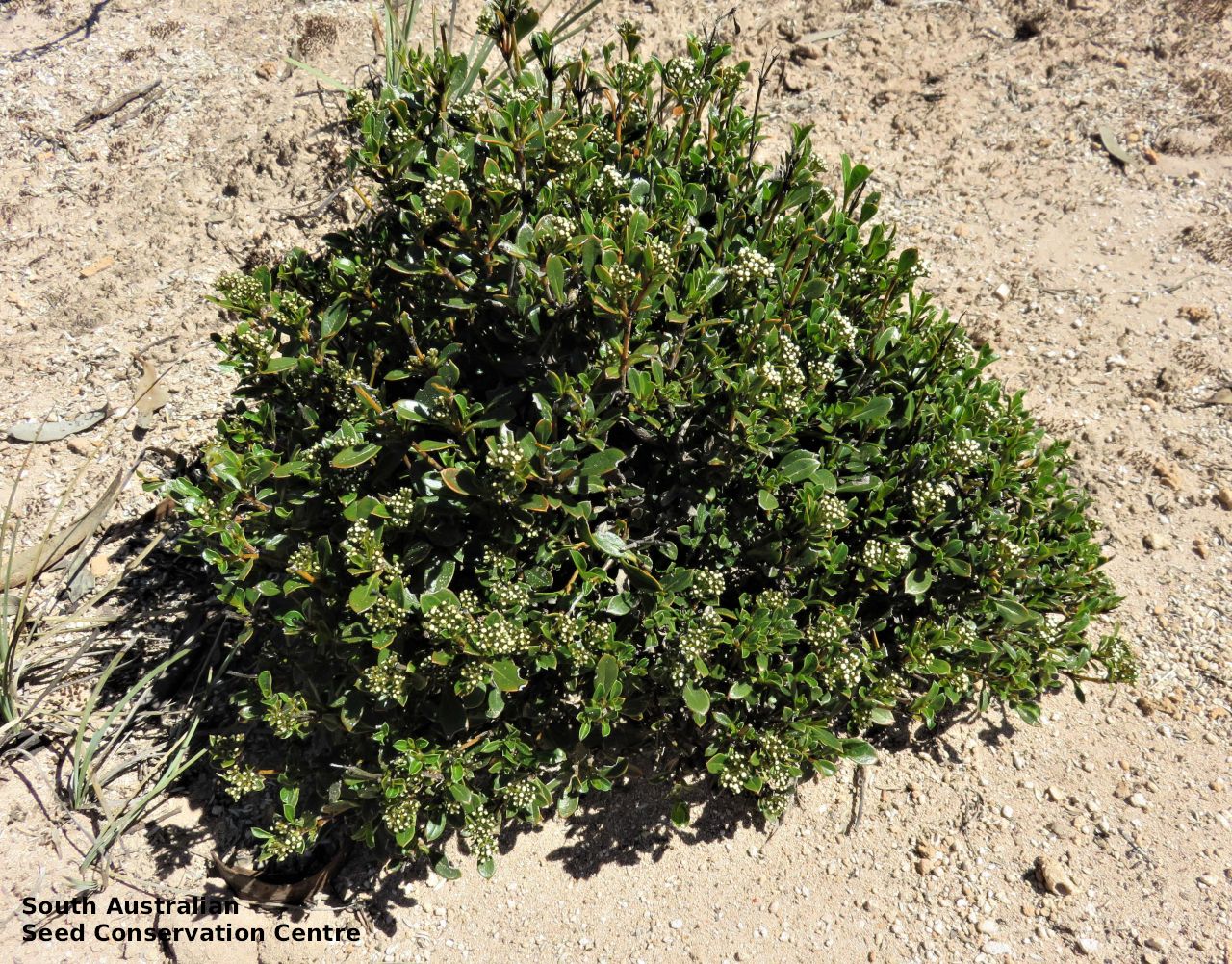
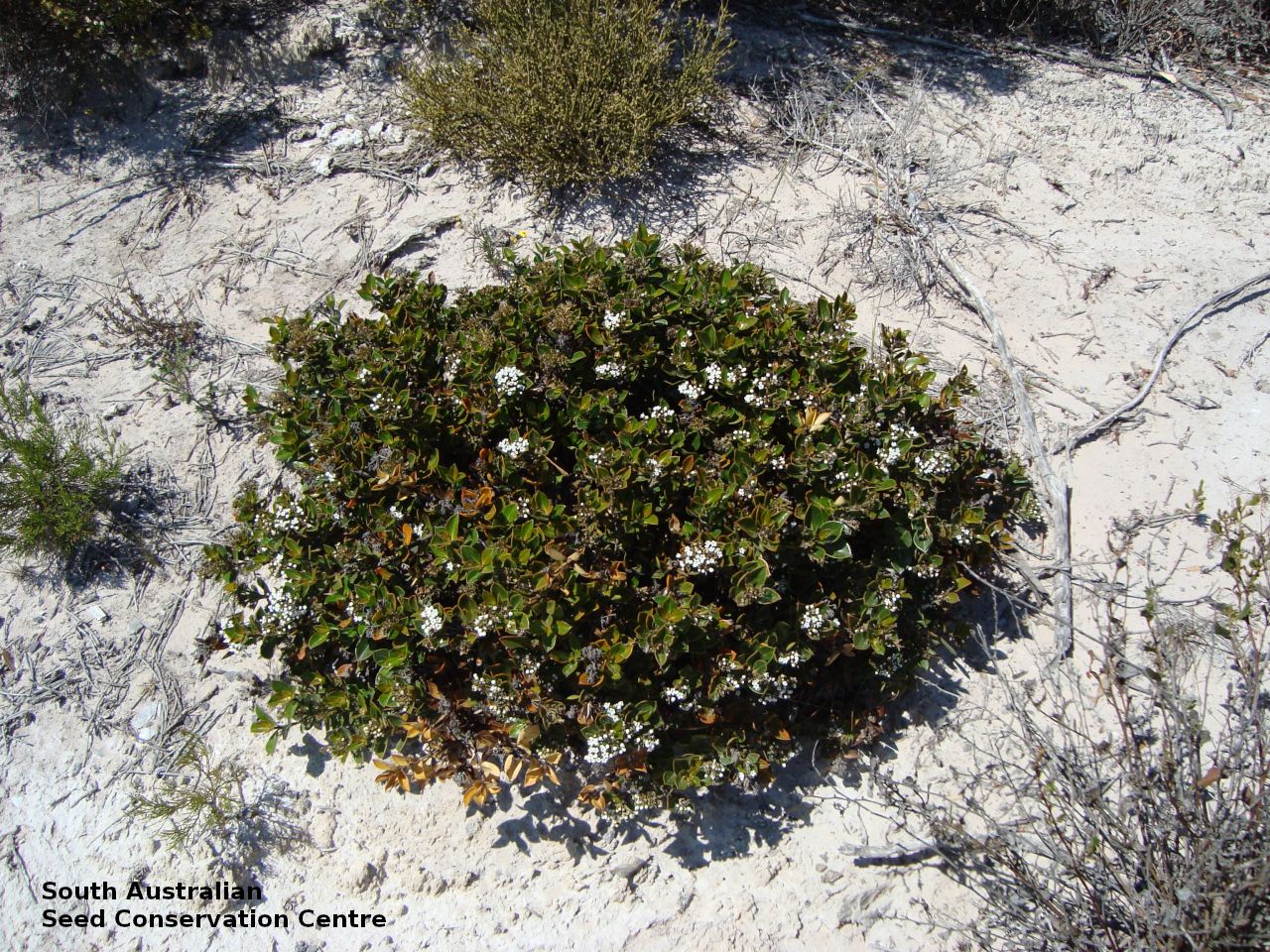
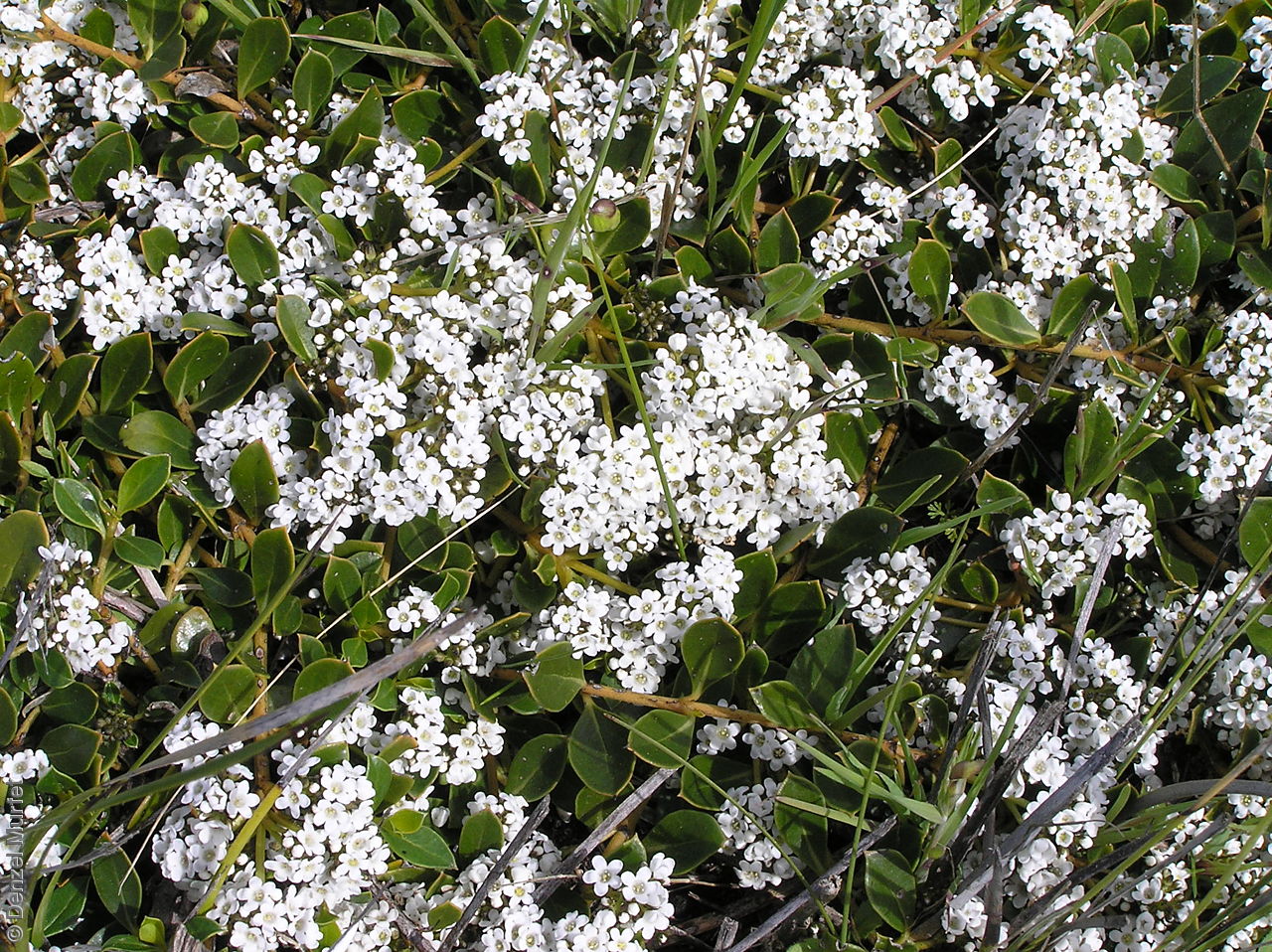
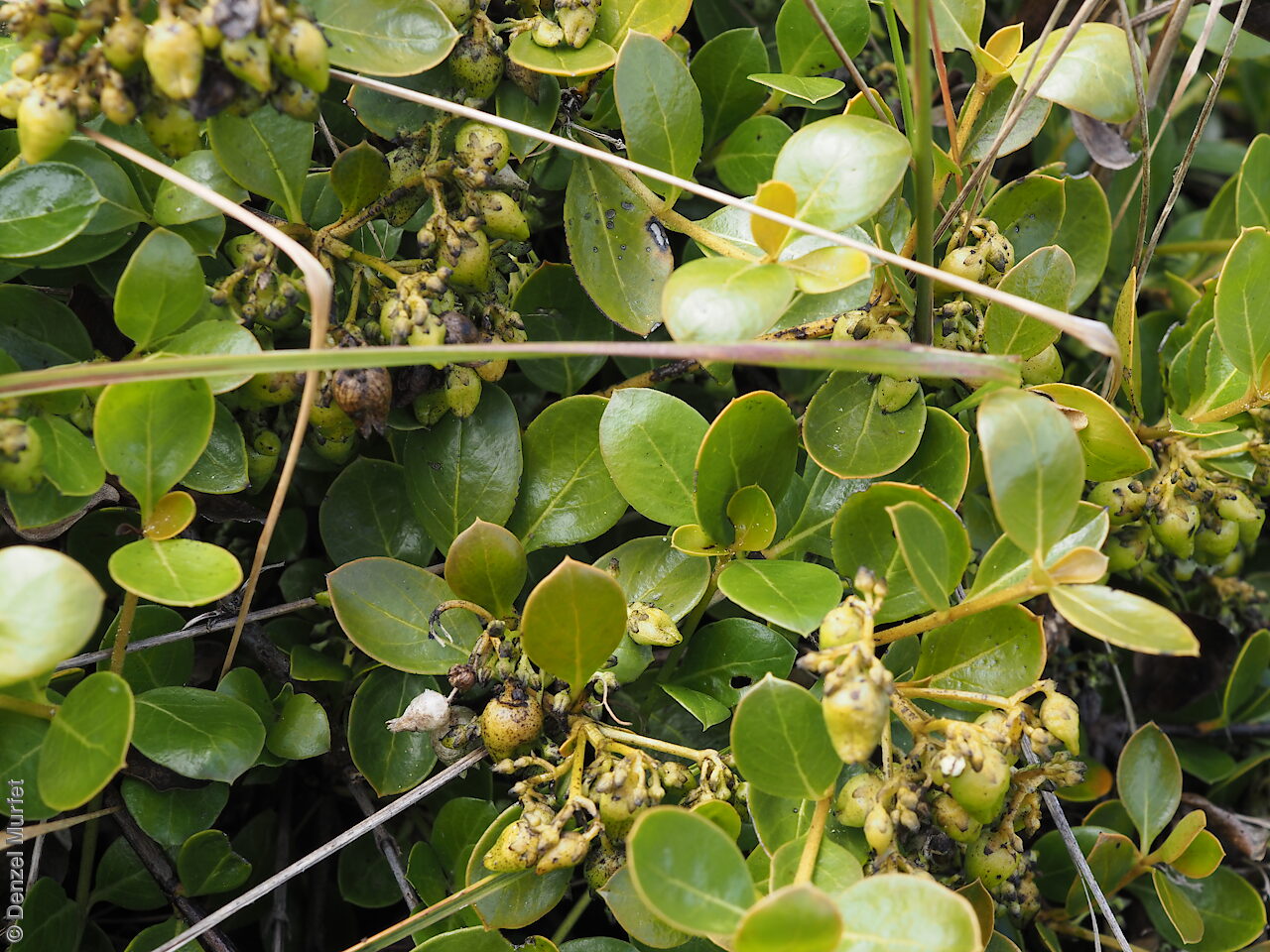
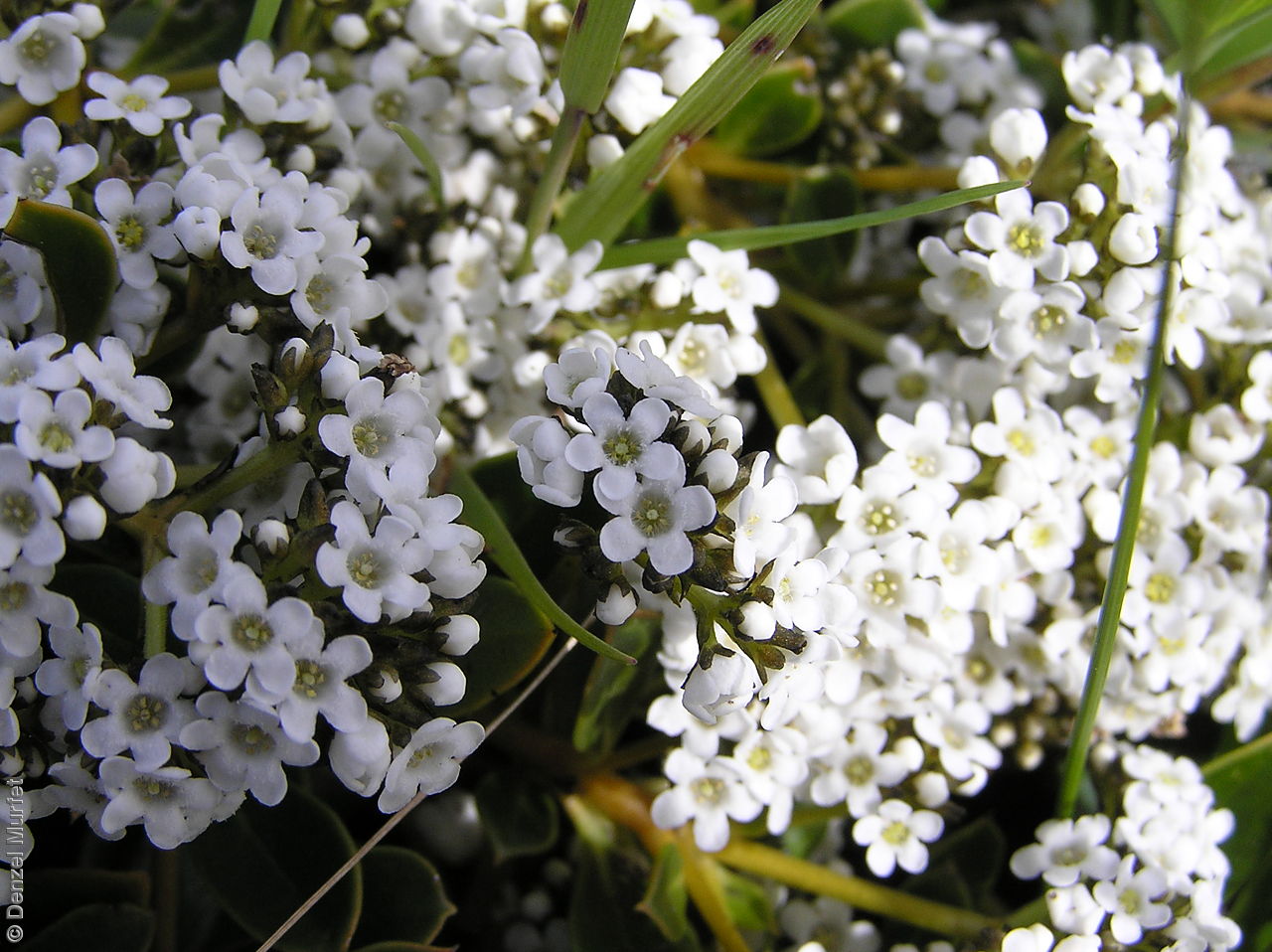
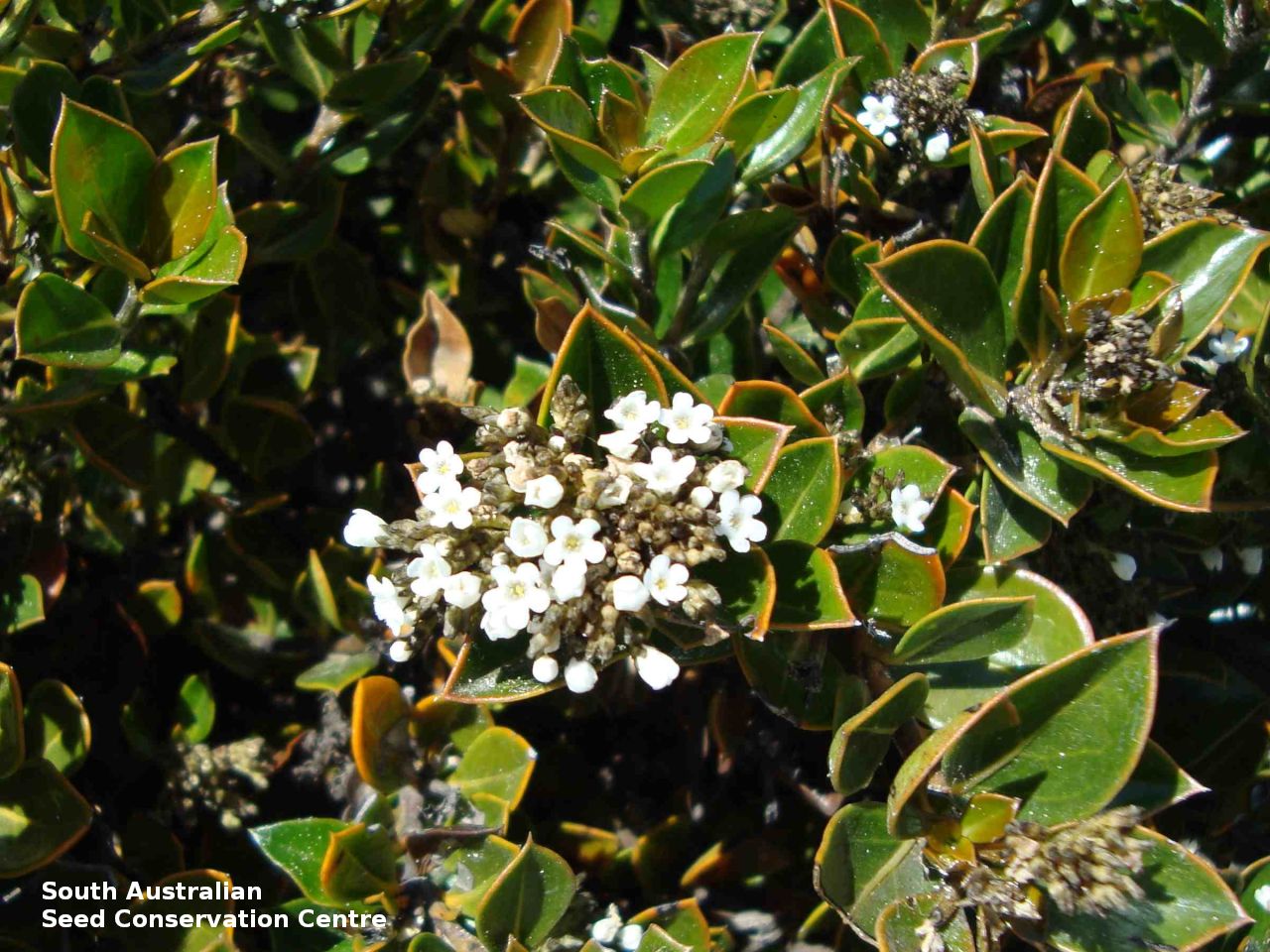
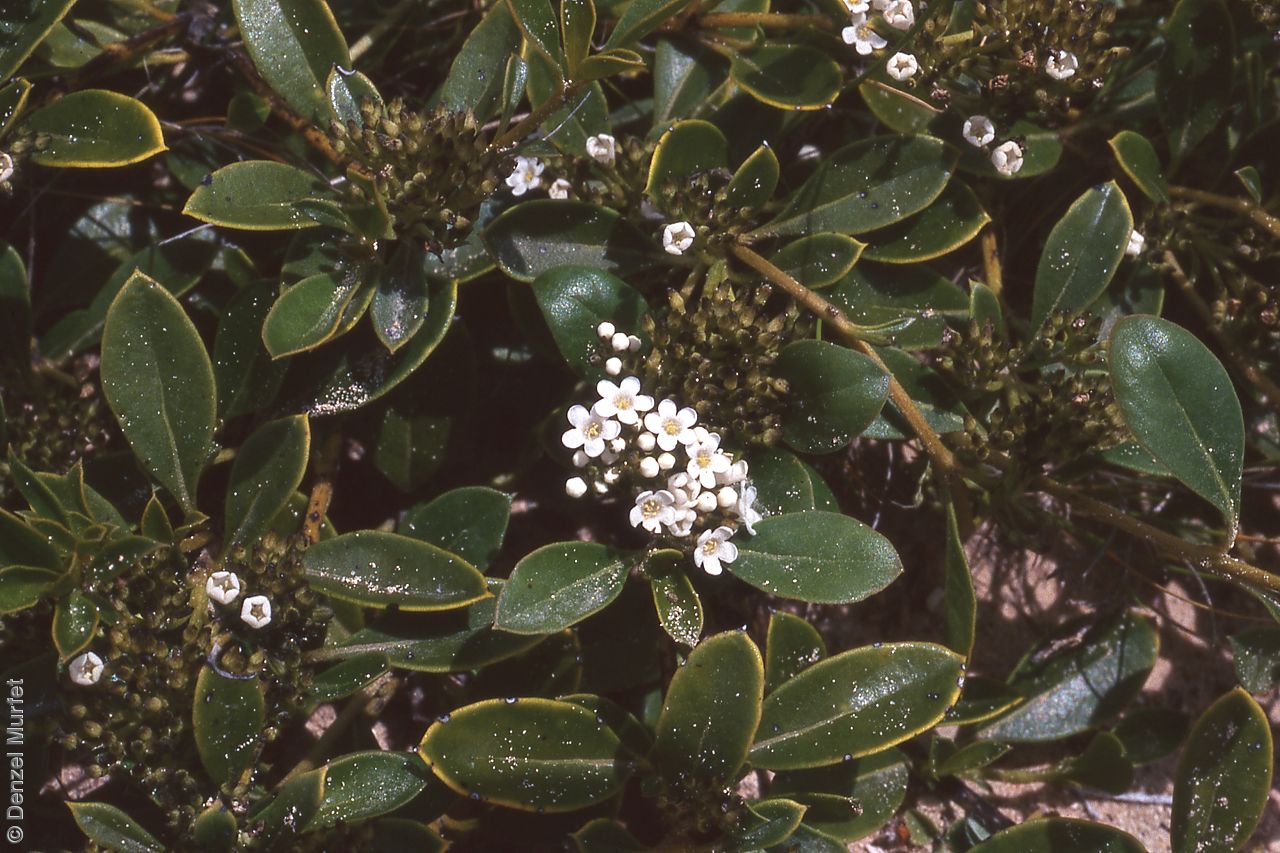

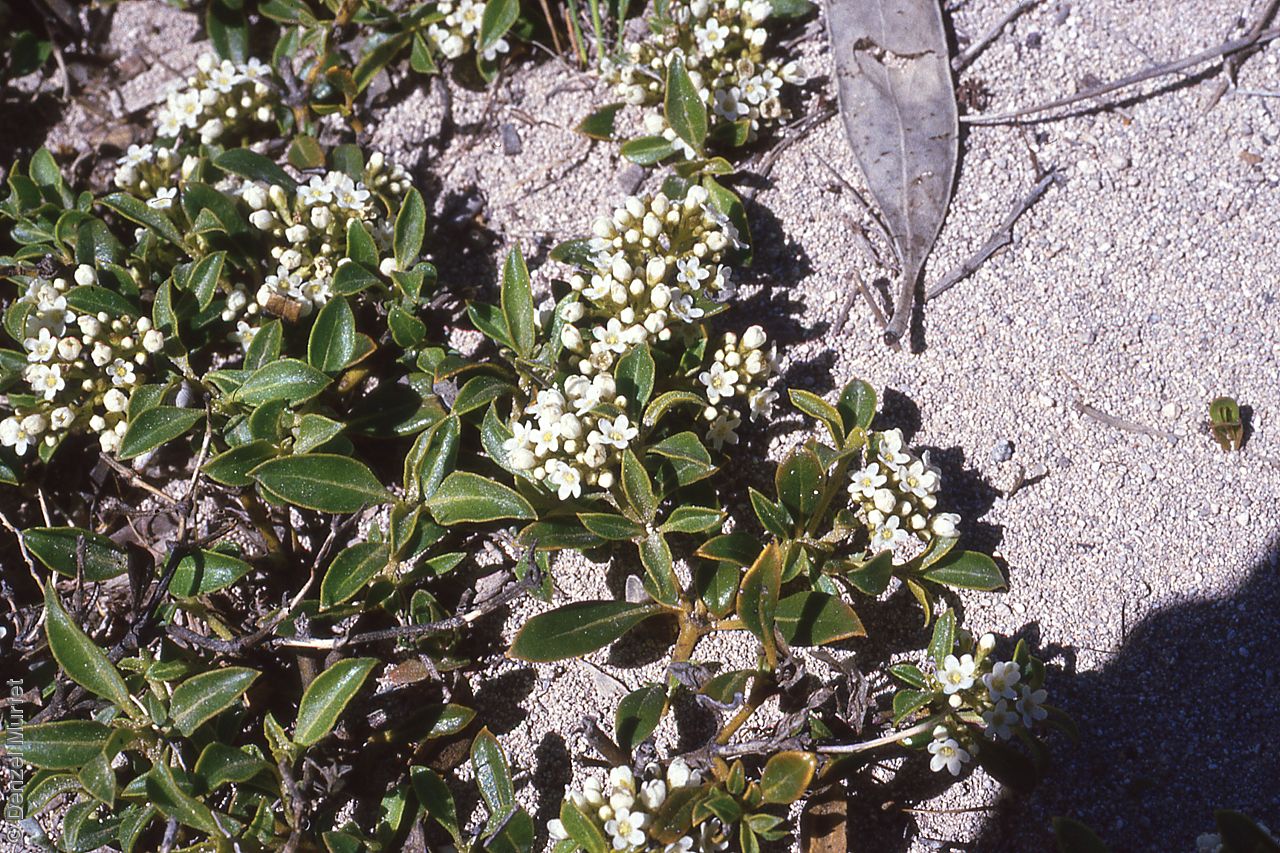
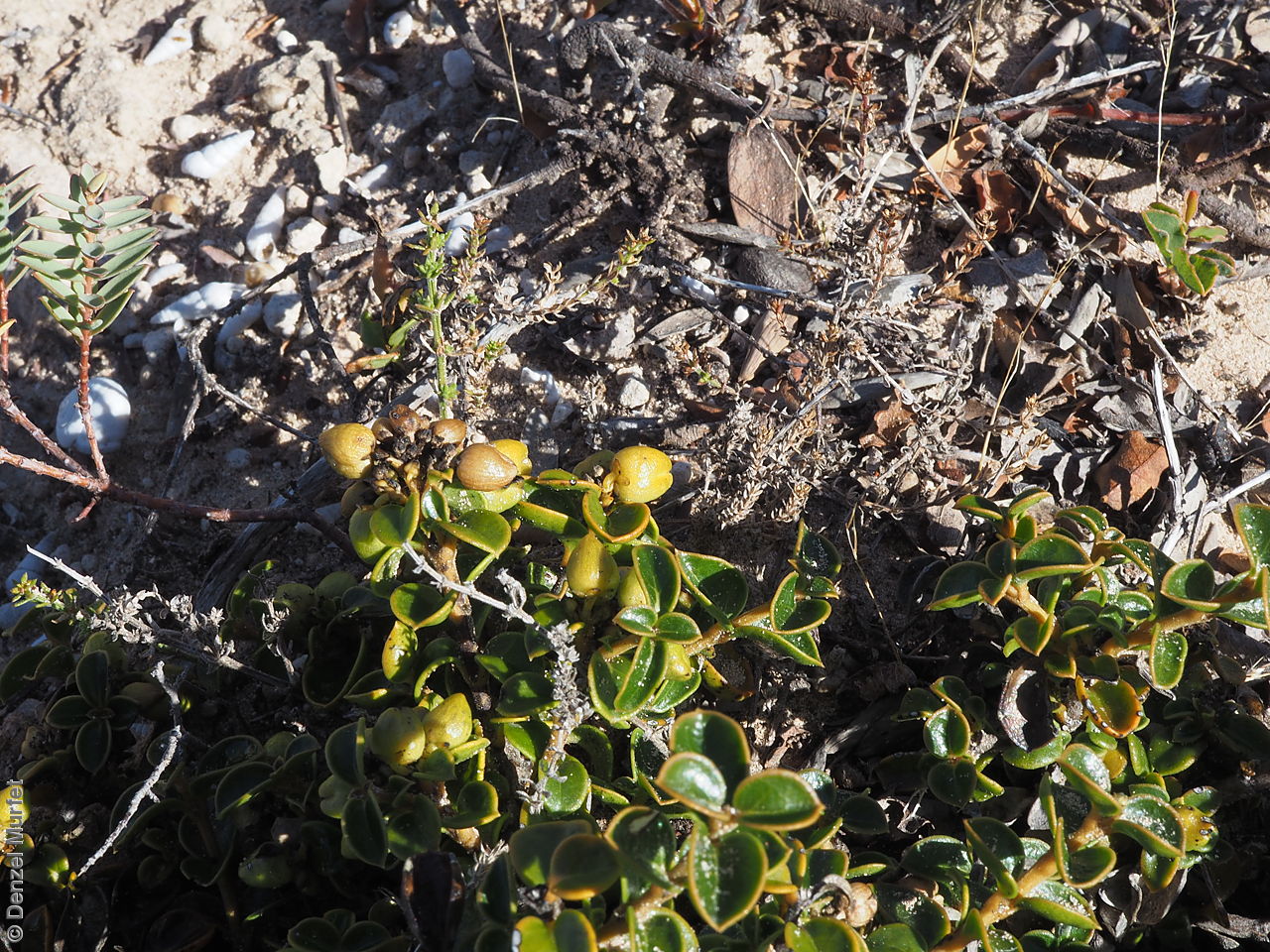
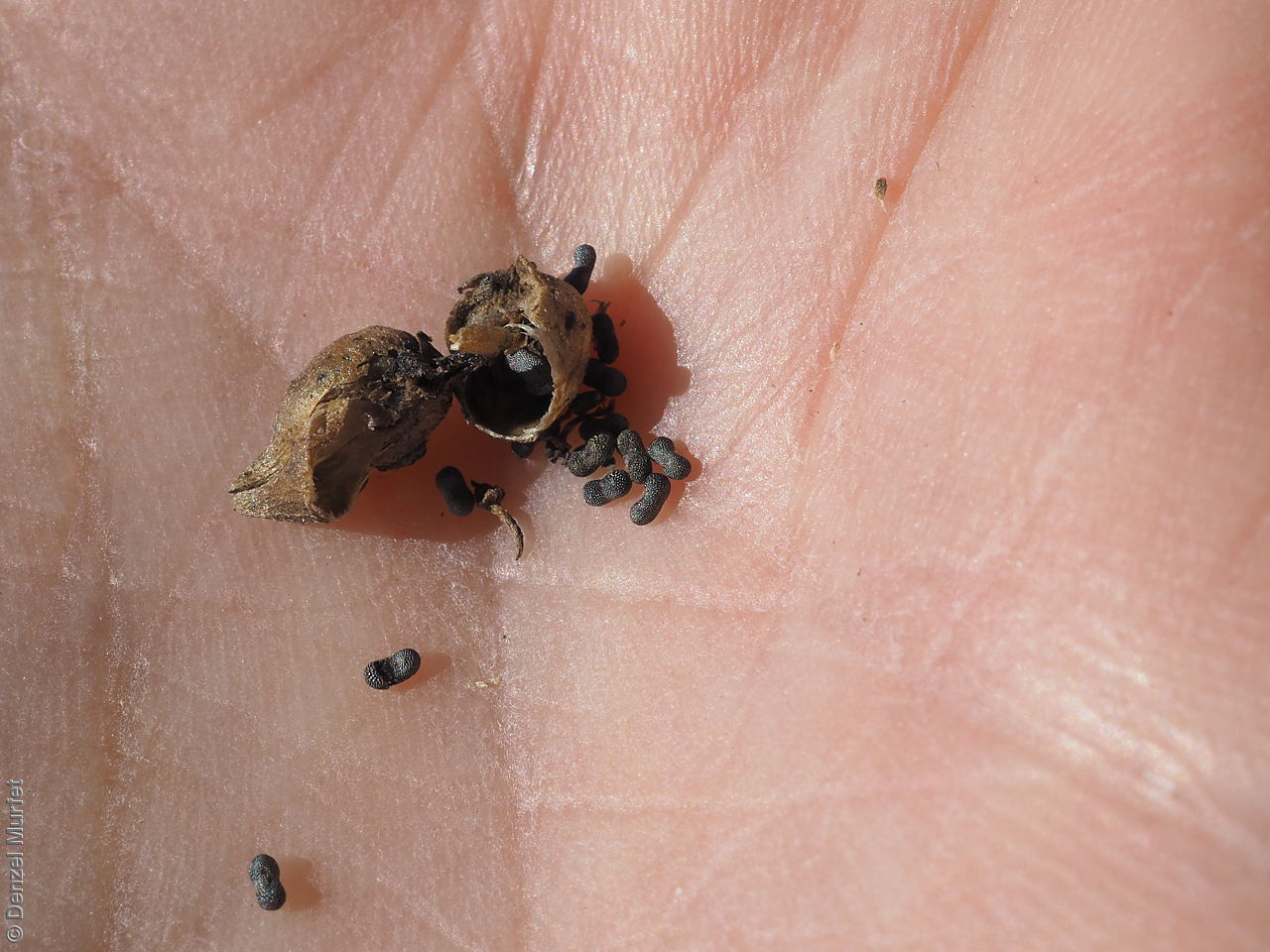
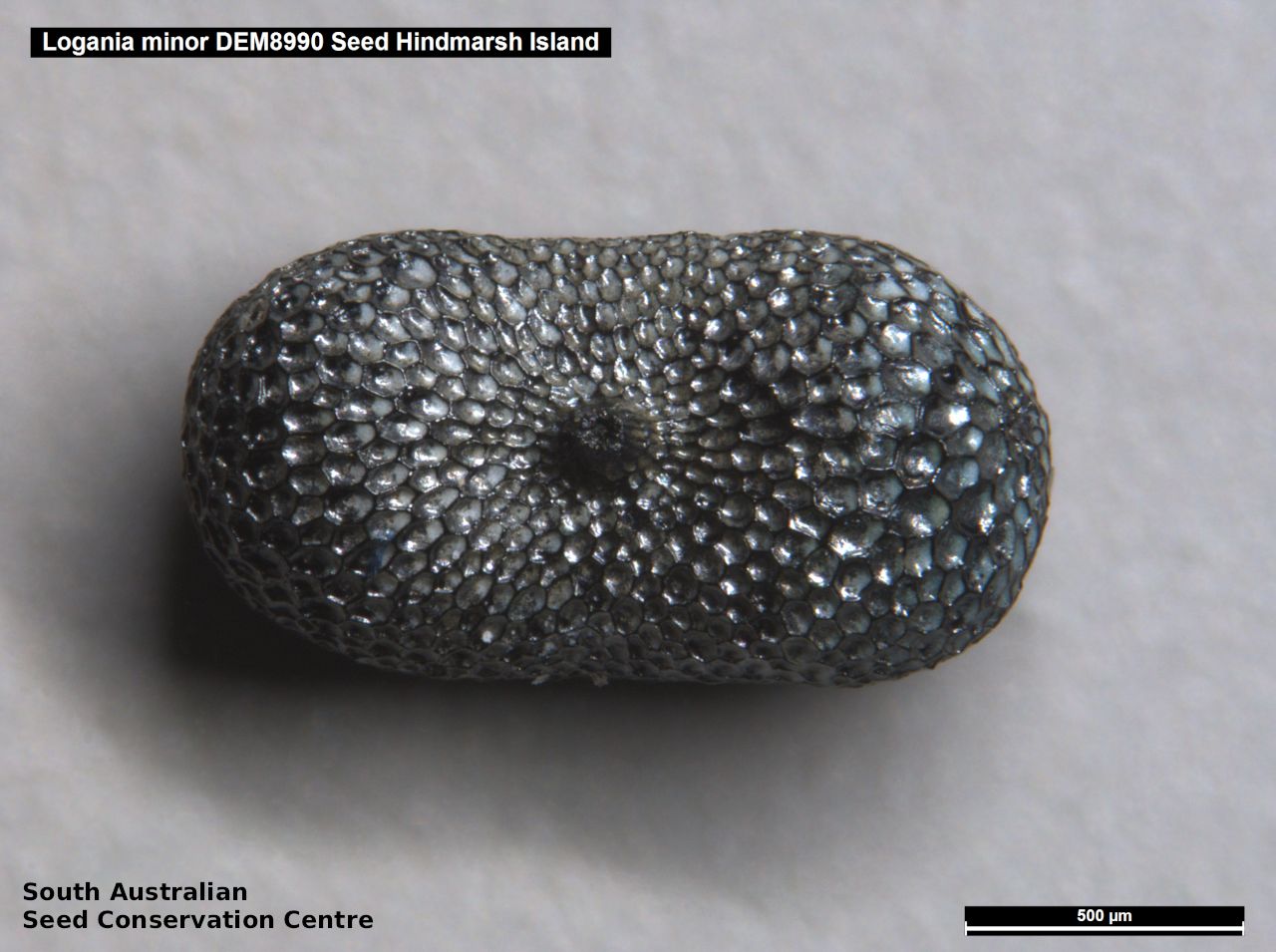
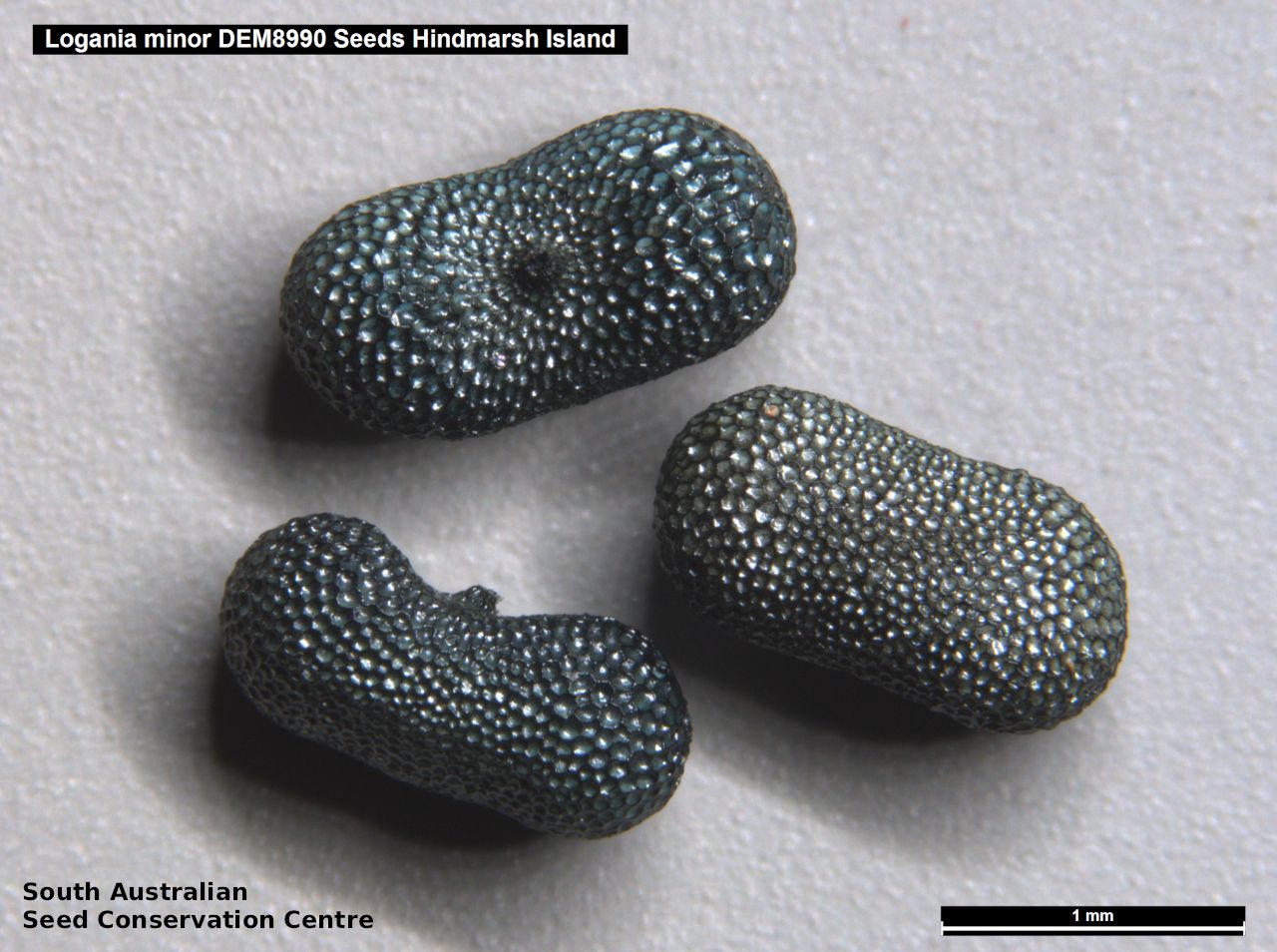

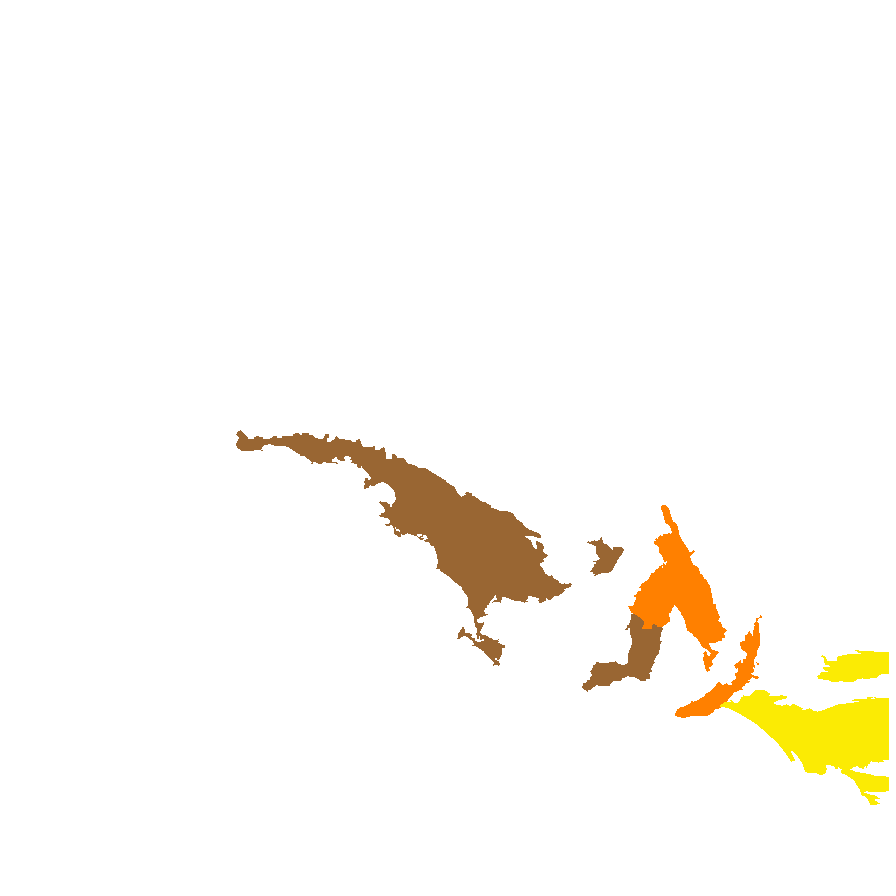
Botanical art
Prior names
Logania crassifolia var. minor
Logania sp. A
Etymology
Logania, named after James Logan (1674-1751), an Irish born botanist who emigrated to North America, became Governor of Pennsylvania and wrote a book on the sexuality of plants. Minor, from Latin meaning small, referring to its smaller flowers compared, with which Loganis crassifolia can be confused.
Distribution and status
Endemic to South Australia and found the Eyre Peninsula, Yorke Peninsula, southern Mount Lofty Ranges and the upper South-east growing along the coast in open mallee communities on brownish sandy soil overlying limestone, or on flats adjacent to bare knolls. Native. Rare in South Australia.
Herbarium regions: Eyre Peninsula, Yorke Peninsula, Southern Lofty, South Eastern
NRM regions: Adelaide and Mount Lofty Ranges, Eyre Peninsula, Northern and Yorke, South East
AVH map: SA distribution map (external link)
Plant description
Prostrate or spreading shrub to 15 cm high and 1 m wide; dioecious; branches densely scabrous, rough to touch; older branches becoming almost glabrous. Leaves narrowly obovate to narrowly elliptic, to 28 mm long and 10 rnm wide; margin rough, flat, shiny green. Inflorescence compact terminal clusters with dense small white unisexual flowers. Flowering between September to October. Fruits are orange-brown ovoid capsule to 7 mm long and 5 mm wide. Seeds are shiny black seed to 1.7 mm long and 0.8 mm wide, with a reticulate surface. Seed embryo type is linear, fully-developed.
Seed collection and propagation
Collect seeds between October and December. Collect maturing capsules that are fat, turning orange-brown in colour, have not open and contain hard black seeds. Place the capsules in a tray and leave to dry for one to two weeks to split. Rub the capsules gently with a rubber bung to dislodge the seeds. Use a sieve to separate the unwanted material. Store the seeds with a desiccant such as dried silica beads or dry rice, in an air tight container in a cool and dry place.